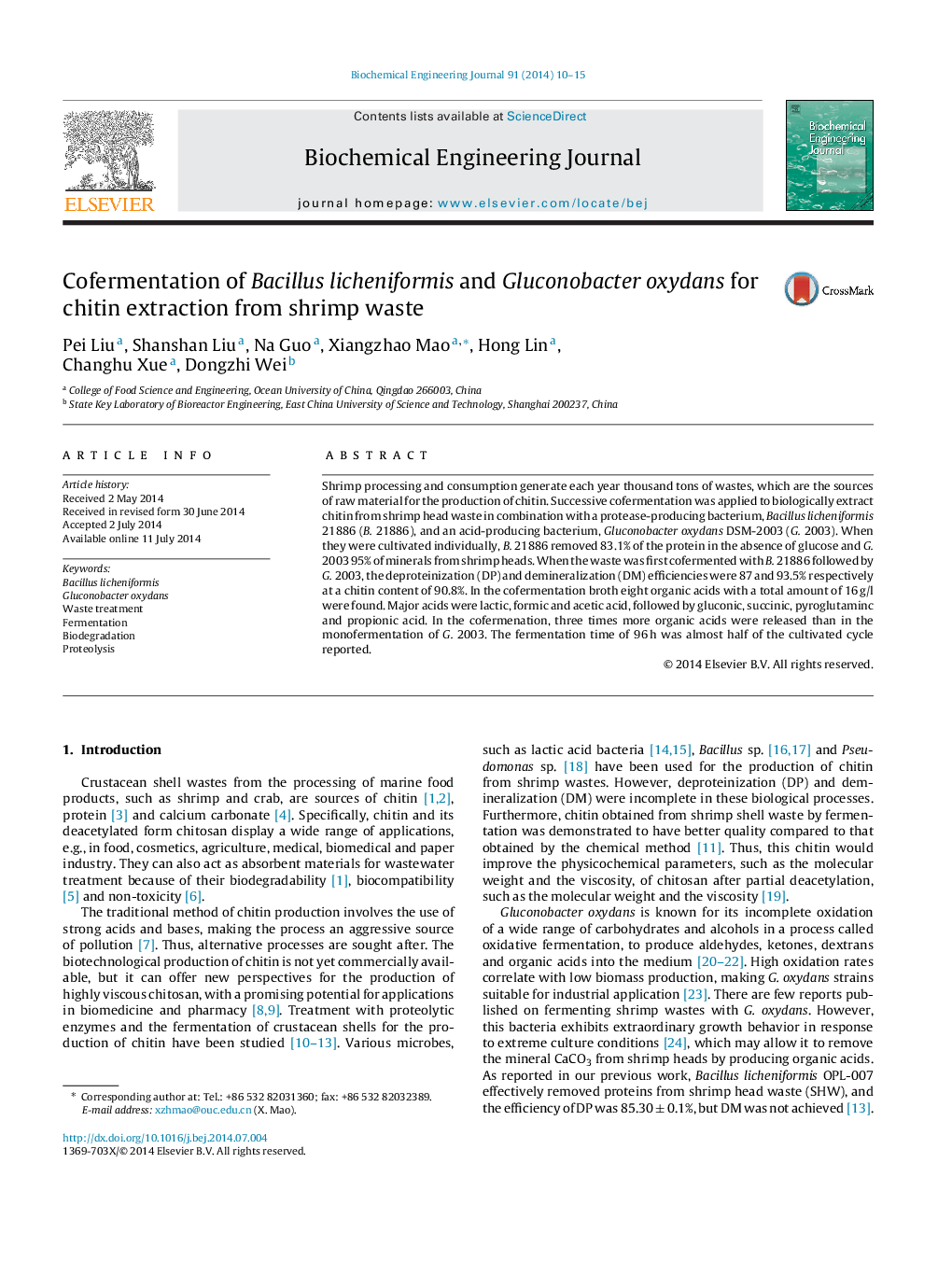| Article ID | Journal | Published Year | Pages | File Type |
|---|---|---|---|---|
| 3105 | Biochemical Engineering Journal | 2014 | 6 Pages |
•Co-cultures of a proteolytic and fermentative bacterium were used to purify chitin from shrimp head waste.•Gluconobacter oxydans was used as an acid-producing strain to lower the pH.•During cofermentation demineralization and deproteination rates were high.•Fermentation time in this work is almost half of the cultivated cycle reported.•The purified chitin had a dense, lamellar structure.
Shrimp processing and consumption generate each year thousand tons of wastes, which are the sources of raw material for the production of chitin. Successive cofermentation was applied to biologically extract chitin from shrimp head waste in combination with a protease-producing bacterium, Bacillus licheniformis 21886 (B. 21886), and an acid-producing bacterium, Gluconobacter oxydans DSM-2003 (G. 2003). When they were cultivated individually, B. 21886 removed 83.1% of the protein in the absence of glucose and G. 2003 95% of minerals from shrimp heads. When the waste was first cofermented with B. 21886 followed by G. 2003, the deproteinization (DP) and demineralization (DM) efficiencies were 87 and 93.5% respectively at a chitin content of 90.8%. In the cofermentation broth eight organic acids with a total amount of 16 g/l were found. Major acids were lactic, formic and acetic acid, followed by gluconic, succinic, pyroglutaminc and propionic acid. In the cofermenation, three times more organic acids were released than in the monofermentation of G. 2003. The fermentation time of 96 h was almost half of the cultivated cycle reported.
